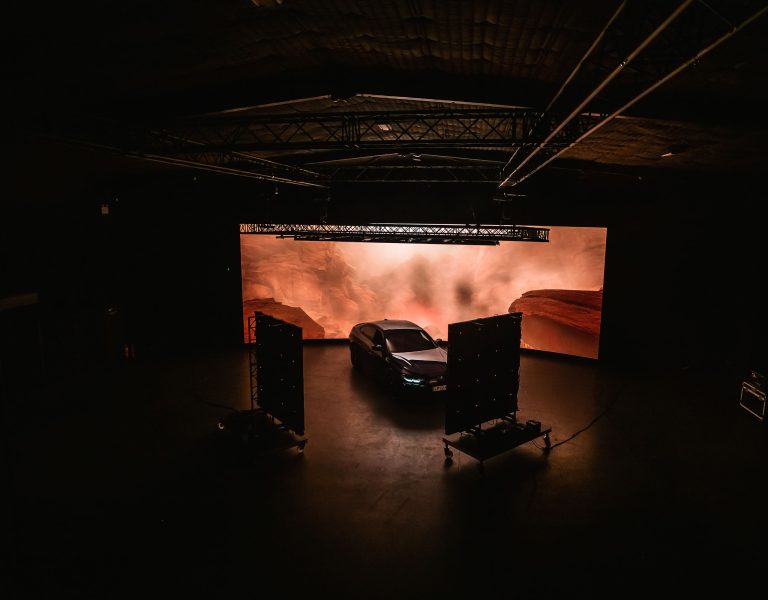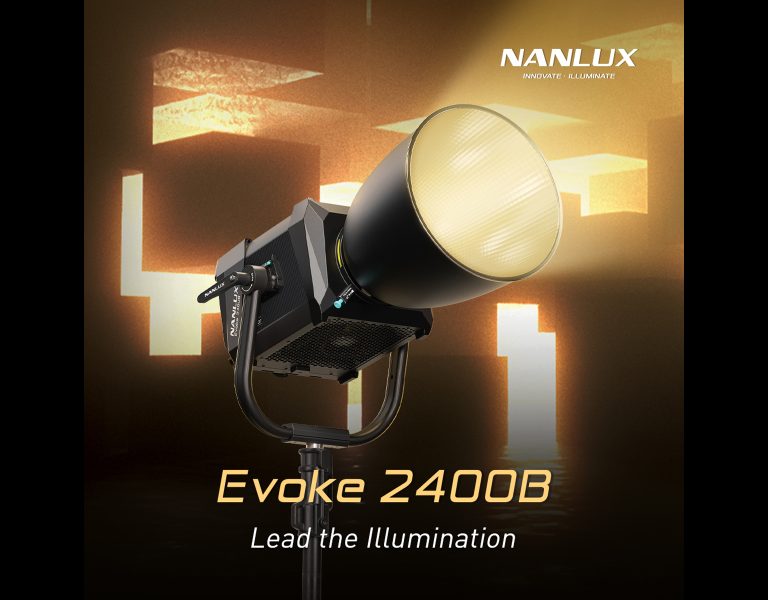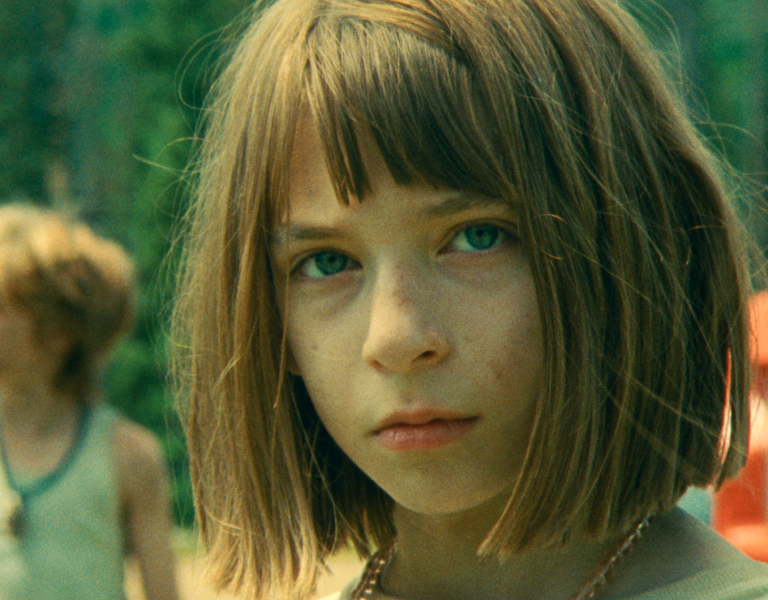SHINING PERFORMANCE
Award-winning cinematographer Sam Nicholson ASC says the right lighting is essential to convincingly combine computer-generated worlds with real subjects. He and his team at visual effects production company Stargate Studios extensively use Nanlux LED lights – here he discusses their performance and gives his thoughts on the newest addition to the range, the Nanlux Evoke 2400B.
Games are big business and it’s no secret that cinematographers have been getting into the action for several years now. Sam Nicholson ASC was one of the first to do so, having collaborated in the 1990s with legendary visual effects supervisor Douglas Trumbull to film elements and write code for early interactive CD-ROM games. Nicholson’s latest project for the video game Shrapnel is a little different: instead of being in-game he was asked to create a live-action trailer. The game is an extraction shooter set in an immersive, war-torn and not-too-distant future, and the mission for Nicholson was to produce a version that put live actors onto a virtual production set.
“Stargate produced the live-action version with real actors and 100% computer generated sets and environments. This is aimed at a simultaneous, transmedia release of both a live-action series and the video game in 2024,” says Nicholson.

Nicholson has long been at the forefront of visual effects in Hollywood. In 2023 he was awarded an ASC Curtis Clark Technical Achievement Award for making significant contributions to the art and craft of cinematography. His early work includes creating the unique kinetic lighting effects for the warp-drive in the engine room of the U.S.S. Enterprise in Star Trek: The Motion Picture (1979), as well as visual effects on hits like Ghostbusters II, Highlander II: The Quickening and Star Trek II: The Wrath of Khan.
In 1989 Nicholson founded Stargate Studios as a dedicated visual effects production company. Now with offices in LA, Atlanta, Malta and Bogota, its credits include projects like The Walking Dead, E.R., Grey’s Anatomy, Five Nights at Freddy’s, Pan Am and many others. In recent years Stargate has spearheaded the push into virtual production. Early work on the Star Wars: Underworld proof-of-concept project for Lucasfilm was one of the first uses of a combined live digital environment playback and partial greenscreen stage. Nicholson has since developed cutting edge in-house solutions for virtual production that have been used on projects like Taika Waititi’s Our Flag Means Death. His team now includes visual effects artists, technicians and producers that can handle projects from early look development through productions and post.
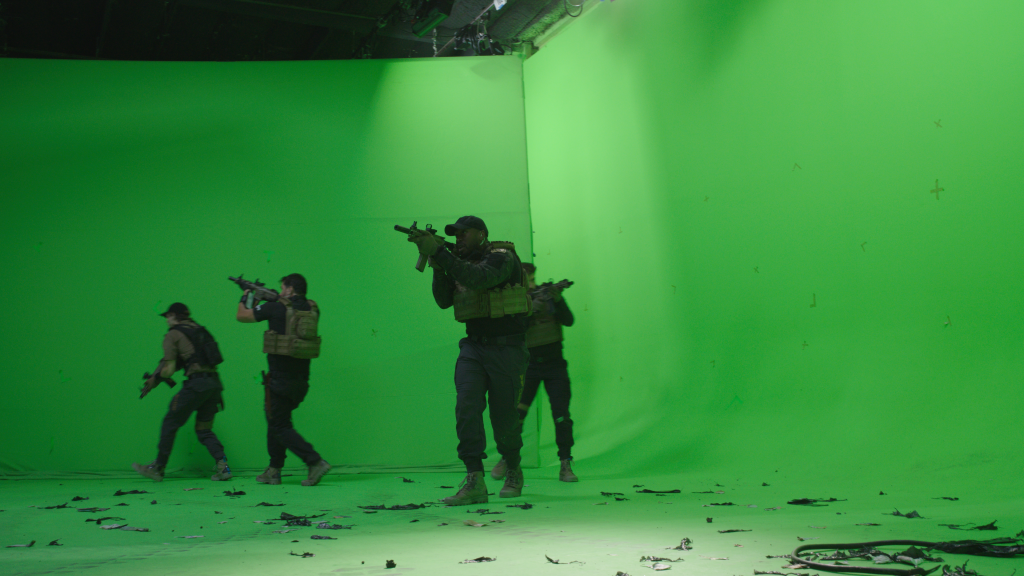
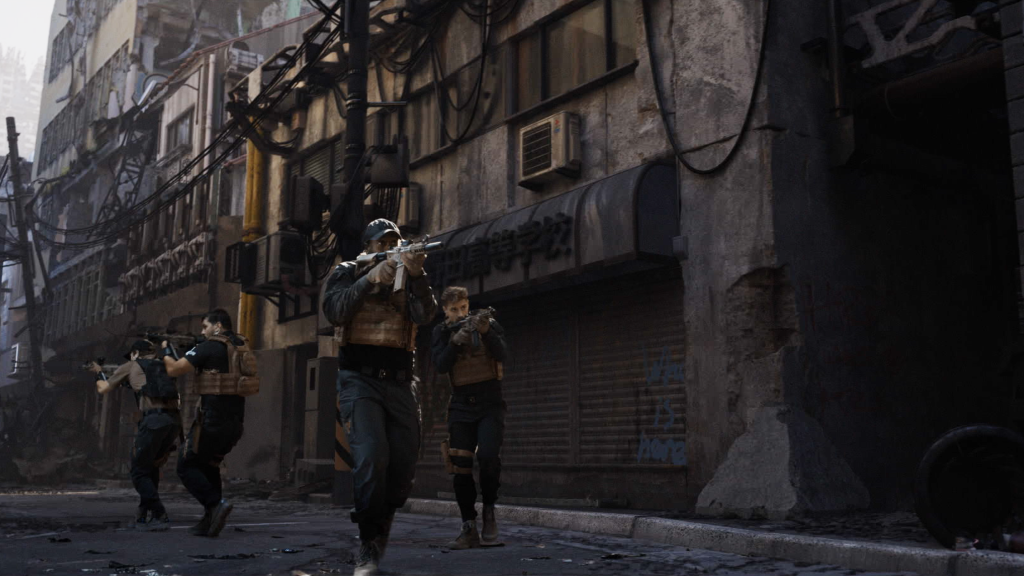
INDIVIDUAL APPROACH
Nicholson has a distinctive approach to creating virtual production that places great importance on lighting. “Stargate is really pushing the envelope on virtual production and particularly the kinetic lighting interface – which requires really high-performance light,” explains Nicholson.
The dynamic nature of the war-torn landscape in Shrapnel gave Nicholson the opportunity to further evolve his use of light to convincingly blend the virtual world with the actors. As with his other recent projects, Nanlux lights were chosen to accomplish this.
Stargate Studios extensively uses the Nanlux Evoke series of LED spotlights, including the Evoke 1200B bi-colour spotlight, the Evoke 900C full colour RGBLAC spotlight and now the latest high-output Evoke 2400B bi-colour spotlight. Nicholson also uses the Nanlux Dyno 1200C LED soft panel as well as the diminutive Nanlite Forza 60C colour spotlight.
For the Shrapnel shoot, says Nicholson, “We had 40 of the Evoke 900C lights on a grid for volumetric lighting so that we didn’t have to get on ladders and move lights around. We could just choose the direction of the light source we wanted. Then we put an Evoke 1200B on each corner of the set so we had ¾ back from either side.

“The hottest light we had on set was the Evoke 1200B, which is a bi-colour, very bright, very clean white light. Our sunlight, our predominant key light, was done with the Evoke 1200B.”
For Nicholson, when shooting plates of a location that is going to go on an LED wall, “I have someone stand in on location and look at what the real light looks like. Then I take the person out and shoot the plates. When we come back to the sound stage, I put that background up and go to the reference frame, and that is what your actor really looks like in the location.”
Nicholson’s next steps involve lighting the person to look absolutely real without the wall lit, with the sun and the fill. “When you turn the wall back on, it looks correct,” he says. “The great misnomer with LEDs is that they light the actor, which they don’t – they are all kind of behind the actor. So you can put in a ceiling, and put in a floor, and bring in all this massive soft light, but where’s the hard light? With the Evoke 900Cs and the 1200 Dynos, we had a combination of hard and soft light that would mimic the LED walls, and generally speaking, we were on greenscreen for 75% of the show.”

EXCITING PROSPECT
The new Nanlux Evoke 2400B, which serves as a true substitute for a 10K watt tungsten or a 4K watt HMI fixture, was unavailable when Shrapnel was shooting – but Nicholson has since evaluated it and is excited at the prospect of what it can do.
He enthuses: “It would have replaced our key light, our sun. We were doing a lot of exterior work, which called for a fair amount of light. We needed a nice single source sun to eliminate double shadows. In most instances, you can gang lights together as a softer light, but if you really want hard shadows from a single source, the Evoke 2400B is now the perfect solution.
“On Shrapnel, I wanted an additional stop or two out of the sun. The real sun is pretty damn bright, so no matter what you do on set it’s never quite enough. Working at a deep depth of field, f/11 on greenscreen, we wanted a very quiet signal and I didn’t want to push the ISO of the camera way up to get it. We also wanted a clip shutter, so we were operating at a 250 open shutter speed and trying to get the look of sunlight. You are reaching for light no matter what you do, so it’s always good to have that high end if you need it.

“You want that sunlight to be four or five stops over the fill, so you really feel the sun and the shadows are very distinct. That’s why you cannot gang up multiple lights if you want sharp shadows. A dead giveaway of lighting for daylight on stage is the quality of shadows.”
He notes that the sharper the source, the better: “You want to back the lights off. If you bring the lights in closer, the shadows are mushy. It’s clearly not the sun. Brighter lights allow us to back up and get a nice clean cut on that key light. The bigger the set you are on, the more you want that big punch. The Evoke 2400B is essential to getting that look when shooting on stage.”
Nicholson was also impressed with the efficiency of the Evoke 2400B: “The reason why the Evoke 2400B is a classic light in a package is that you have a white light source which pulls less than 20 amps but is essentially a 10K output. It’s ten times more efficient than a tungsten light.”
Besides the outstanding output, Nicholson notes that it eliminates the need for a 100-amp generator for one light, which translates into savings for production. “The efficiency of the output and how clean the light is in terms of being able to dial from 2700 up yo 6500 CCT at 10K output is outstanding,” he says. “You can get a very blue light or an extremely warm orange-white. If you really want to get crazy with colour, you add the Evoke 900Cs and you have a six-colour engine that will give you clearly recognizable 20/20 colour in every part of the spectrum.”

The Evoke 2400B also has adjustable green-magenta shift across its 2700-6500K CCT range, ensuring seamless compatibility with fixtures from other manufacturers.
Nicholson also expects his lights to deal with the high frame rates now frequently used in virtual production. Here too the Nanlux lights meet his expectations. “These lights are fantastic for shooting and very beneficial. Once you start rolling at 1000 frames per second, your exposure goes way down, so it works hand in hand: the high frequency, flicker-free performance with the high output and the really refined colour imagery of the lights,” he said.
Nicholson’s vision for the future involves applications that he and his company are developing for kinetic lighting. “In order to get a realistic look out of volume, lighting is half the battle,” he explains. “We are involving high tech shooting on LED screens, with lights synchronised to the cameras. After you have gotten a very high frequency screen with great colour imagery and good blacks, and you built your $2 million dollar wall, you don’t just stand in front of it and it magically looks good.
“The lighting has to be equally as sophisticated as the rest of the technology. We are driving it from 0 to 100 percent when we pixel track the lighting. It’s receiving a command from the display that is on the LED wall; video is driving it, we are not programming the lights. But having a really responsive light that is economical, both financially and power-wise, allows you to hook up a lot of these lights.”
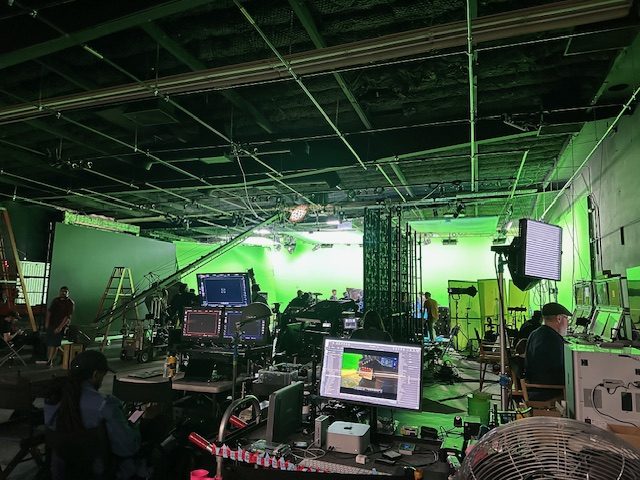
He adds that the idea isn’t to turn them all on at once, but to shift the key light from one side to the other: “You have to change the pixel tracking of it. For instance, as you drive into a tunnel in a virtual driving sequence, all the lights have to perform as if they are going from exterior daylights into a sodium vapour, and they have to have a rhythm to them that is kinetic. It is much more complex what you are asking a light to do if you are pixel tracking it as opposed to just turning it on and off with a gel. It’s continually changing colour and value continually, and it has to be very, very dependable at the same time. Nanlux lights fit all those requirements. And, quite honestly, it won’t break the bank.”
Nicholson laughs as he referred to the ‘iron triangle’ adage: “The good, fast, cheap triangle. You are lucky if you get two but with Nanlux you get all three. They are affordable, dependable and work fast.”


